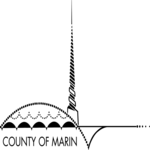Global Gas Prices & Marin

As 2015 begins, we are seeing some continued, downward movement in gas prices at the pump. Gasoline prices are determined, in large part, by the price of crude oil on global markets. Future markets for oil also play a major role. Many people understand this, as gasoline is derived from crude oil. The gas price going down is a reflection of a global glut of oil. As in any markets when there is an excess supply of a commodity (supply greater than demand currently), prices begin to fall. Demand for gasoline is falling in the United States seasonally; the winter usually shifts demand from gasoline to heating oil and natural gas in part as people stop driving as much and need to stay warm.
The suggestion of excess supply leads to some questions: is it too much supply, lower demand, or a combination? The recent fall in gas prices has led to a lot of questions because it seems more extreme than normal. Industry analysts suggest it is a mix, which points to how fast gas prices have fallen. If demand is lower, price falls to re-attract buyers; if supply is large, prices fall to liquidate inventory. Sometimes these chase each other in a race downward. As a result, we all applaud the change because has many similarities to a tax cut given the role of gasoline in our economic and personal lives.
The big question is if this change is cyclical or structural; commodities markets have volatility and supply and demand are constantly shifting. Some will argue this is a function of too much fracking and extraction of new oil supplies pursuing profit in the United States. Perhaps OPEC nations and other oil-producing countries did not coordinate their production levels well and overproduced. Some will argue that global demand is sagging due to questionable economic growth outside the United States. Some will argue this is the beginning of a new normal in oil prices because Americans are shifting to hybrid vehicles and alternatives to classic gasoline demand. All of these explanations are likely part of the story. It is important to start with the idea that there will be adjustments and this is likely a cyclical (mismatch of supply and demand currently) issue not structural (a new normal for gas prices).
For Marin County, the reduced gas prices help our low-wage commuters reduce their costs. The unfortunate by-product of lower gas prices is that it can distort incentives around the use of mass transit, carpooling, biking, and other alternatives to single-vehicle car trips that organizations such as Marin Transit, Transportation Authority or Marin, and many environmental groups have been trying to shift Marin County workers and residents toward for decades. Resolving the constant tension between equity, economics, and the environment is at the heart of what Marin Economic Forum does every day.
MEF recently held a focus group on the connections between housing and transportation for our Comprehensive Economic Development Strategy(CEDS) project in collaboration with Marin Community Foundation, Union Bank, and the Federal Employment Training Branch. The recommendations from that focus group will be available for public feedback in January 2015.
The decisions made in Marin County about housing and transportation will affect local and regional demand for commodities of all types, including gasoline. The recent swings in gas prices remind us that even Marin County is part of a global market and lower prices has benefits and costs. The hope is that we do not lose sight on innovations that provide more alternatives and reduce environmental damage; such movements use businesses to solve long-term problems, the heart of an innovative economy.














